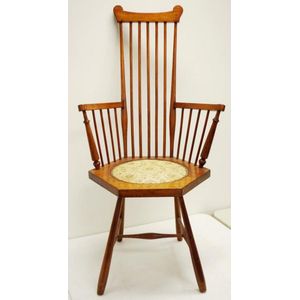
Carved Cedar Aesthetic Hall Seat with Kookaburra & Snake
An unusual Australian carved cedar Aesthetic movement hall seat, late 19th century, the mirror inset back relief carved with a kookaburra catching a snake amongst bulrushes, 130 cm high, 83 cm wide, 48 cm deep

Aesthetic Movement Chair by Beard Watson
Beard Watson aesthetic movement chair 58 cm wide, 113 cm high

Cottier & Co American Rosewood Hall Chair, circa 1900
An American rosewood, ebonised and tortoiseshell inlaid hall chair by Cottier & Co, circa 1900, of ancient Roman design the panelled back inlaid with an anthemion and scrolling tendrils, the seat flanked by scrolls and above a confirming inlaid apron, the…
 Loading more...
Loading more...